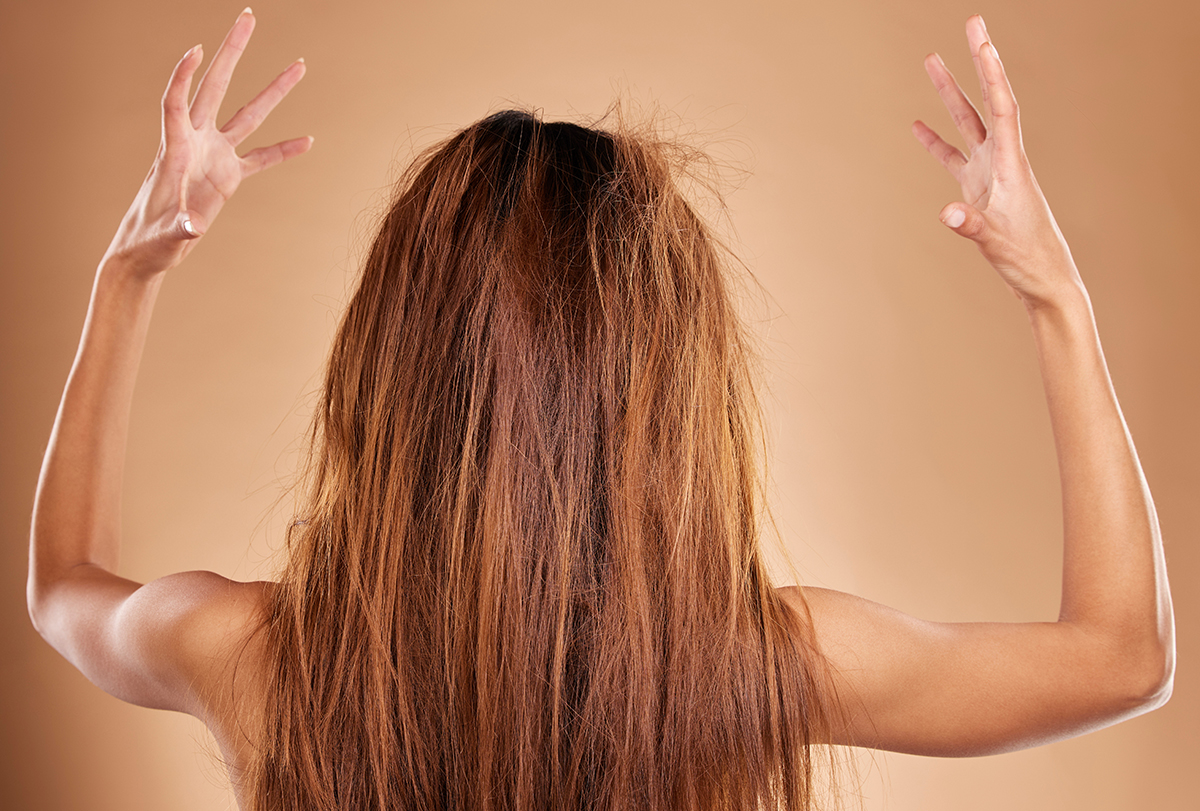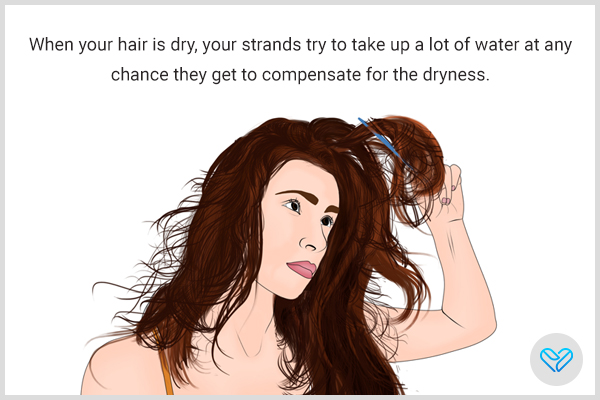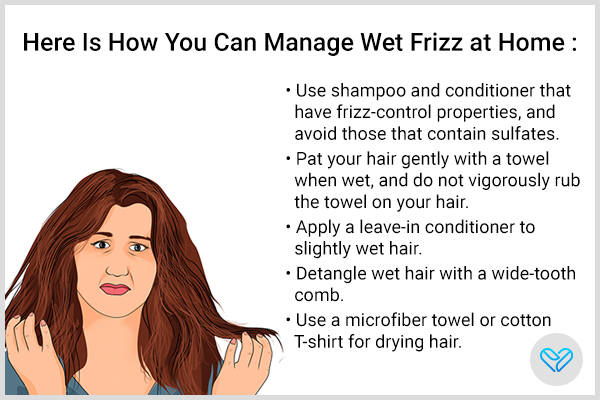In this article:
You’d think that when your hair is wet, it’d lay flat and be a little weighed down, but then you look in the mirror and see untamed strands or frizz. This is known as wet frizz which refers to the frizziness of the hair when it is still very wet.

You can identify wet frizzies as the loose strands of hair that, very chaotically, point in different directions. They make your hair appear super dry, almost like strands of threads attached to your scalp.
This can be a big letdown, especially if you just want to have a good hair day after a nice cleansing shower.
What is the reason behind wet frizz? Why are some people unable to enjoy a nice hydrating hair wash day?
Continue reading to learn more.
What Makes Hair Frizzy When It’s Wet?
Your hair gets frizzy when the outermost coating of your strands, known as the cuticle, is a bit raised and therefore the movement of moisture from the air to the hair shaft becomes very easy.
This causes an increased influx of water into the hair, which eventually makes your hair swell up. (1)(2) This swelling further leads to unruly hair.
This is exactly what happens in people who have wet frizz as they have an unhealthy cuticle that lets a lot of water pass through.
Who Is More Prone to Wet Frizz?
Not everyone will experience wet frizz, but some are more prone than others to suffer from it. Factors that make you more susceptible to frizz are as follows.
1. Dry hair

When your hair is dry, your strands try to take up a lot of water at any chance they get to compensate for the dryness. This can lead to the hair taking up a lot of moisture when washing it, which will eventually cause wet frizz.
2. High hair porosity
Having highly porous hair means your cuticles have plenty of space between them that can allow a lot of water to be trapped inside. (3)(4) This is why your hair remains wet for a long time and experiences wet frizz.
3. Product buildup on the scalp
If you use a lot of hair products or styling gels, then you may be at an increased risk of product buildup. When a product is not completely washed off, it accumulates on the scalp and attracts dirt and debris.
With time, the product buildup may form a coating that does not allow proper moisturization of the hair and contributes to hair frizz.
4. Using the product with the wrong pH
Your hair naturally has an acidic or a low pH, which is why it is important to maintain this pH balance. The right pH keeps the cuticle closed and thus avoids wet frizz.
However, using products such as shampoos that have an alkaline pH may contribute to wet frizz. Research has shown that shampoos with a low pH are the best for avoiding frizziness. (5)
5. Using hard water for hair washing
Hard water contains a lot of minerals that can keep building up on the scalp and block your cuticles. Also, it may change the pH of your hair, leading to wet frizz.
How to Manage Wet Frizz at Home?

Here is how you can manage wet frizz at home:
- Use shampoo and conditioner with frizz-control properties, and avoid those containing sulfates.
- Pat your hair gently with a towel when wet, and do not vigorously rub the towel on your hair.
- Apply a leave-in conditioner to slightly wet hair.
- Detangle wet hair with a wide-tooth comb.
- Use a microfiber towel or cotton T-shirt for drying hair.
- Minimize heat styling or use the lowest heat setting and heat protectants.
- Trim your hair regularly.
- Use DIY masks using ingredients such as honey or coconut oil.
Most-Asked Questions
Can wet frizz be prevented?
Yes, you can prevent wet frizz by using frizz-control products and being gentle when drying your hair.
Is wet frizz permanent?
No, wet frizz is not permanent.
Final Word
Understanding the things that lead to wet frizzy hair enables you to make the right choices in your hair care routine. By dealing with the specific requirements of your hair and adopting the right techniques, you can say bye to frizz and say hello to smooth, manageable locks.
- Was this article helpful?
- YES, THANKS!NOT REALLY


